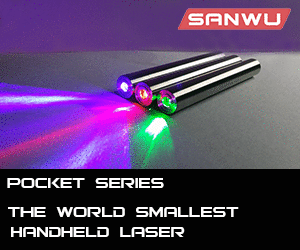Zom-B said:
I've never heard of the multiple mirror story. As fas as I know, it's just one mirror on each side. When it fails, then the little remaining light is the pump LED. This one pumps the gas in the cavity and inverts the population. If the gas is gone or the mirrors dark, then you still see the LED part working.
We have a little misunderstanding here, that's not how a diode laser works. That would be optically-pumping a gas laser with an LED. A diode laser is completely solid state, and we run them completely electrically pumped. The whole thing is solid, no gases, just one monolithic hunk of material ("single" crystal - The whole thing is grown as a crystal, but different materials one-on-another epitaxially). The "cavity" isn't really a cavity, it's just the area inside the solid, monolithic chunk where the light is resonating. There's wave-guiding in place to keep most of the light in the middle of the diode, in the "cavity", but really it's just an area in the middle of the solid.
(Disclaimer: This is all brief and hand-wavey, just to get an image of what a laser diode "looks" like and how it lases).
Below threshold, the diode is just an LED, only spontaneous emission. The current going into the diode injects carriers into the active region of the diode, in the middle (also the same area as the cavity, ie the place where there is guiding to keep the light in, so the light is kept in the same area as the carriers that are injected when operating as a laser). The positive side injects holes, the negative side injects electrons, and the ones that make it there get trapped in the active region. The carriers, holes and electrons, being forced into and trapped within the active region is what gives the population inversion. Below threshold, these electrons and holes have a finite lifetime before they meet up with one another and recombine. Basically, this look like an electron falling through the bandgap into a hole, and when that happens it gives off its energy in a photon, in a random direction. All the electrons and holes doing this is an LED, all the light going in random directions. Of course, some of these photons will be emitted along the "cavity", hit the mirrors at the end, and bounce back and forth once or twice, but there aren't enough of these to do much stimulating emission since there is as much, or more, absorption as there is stimulated emission.
As you increase current to threshold, those photons in that correct direction along the "cavity" bounce back and forth, and there are enough of them that you start getting significant amounts of stimulated emission. Instead of an electron and hole getting injected and sitting there for some time before spontaneously emitting on their own, there are enough photons bouncing back and forth that the electron/hole pairs get stimulated to recombine BEFORE they spontaneously fall on their own. It's the exact same recombination as in the LED, except when there is enough light in place, stimulated recombination will happen before they can spontaneously do it. It's an LED, but when you have tons of light bouncing back and forth through your "cavity", the electrons/holes get stimulated to recombine so fast that they don't have time to spontaneously emit, instead they get emitted as light coherent with the light already in the "cavity", and you have a laser.
When the electron/hole pairs sit around on their own for a while in an LED, they'll eventually decide to just recombine and emit their photon in a completely random direction. In a laser diode, instead, a passing photon tells them "hey, recombine NOW and emit your photon in this direction, the same direction as me, in the same phase as me", and they do.
Any of that make any sense at all?











